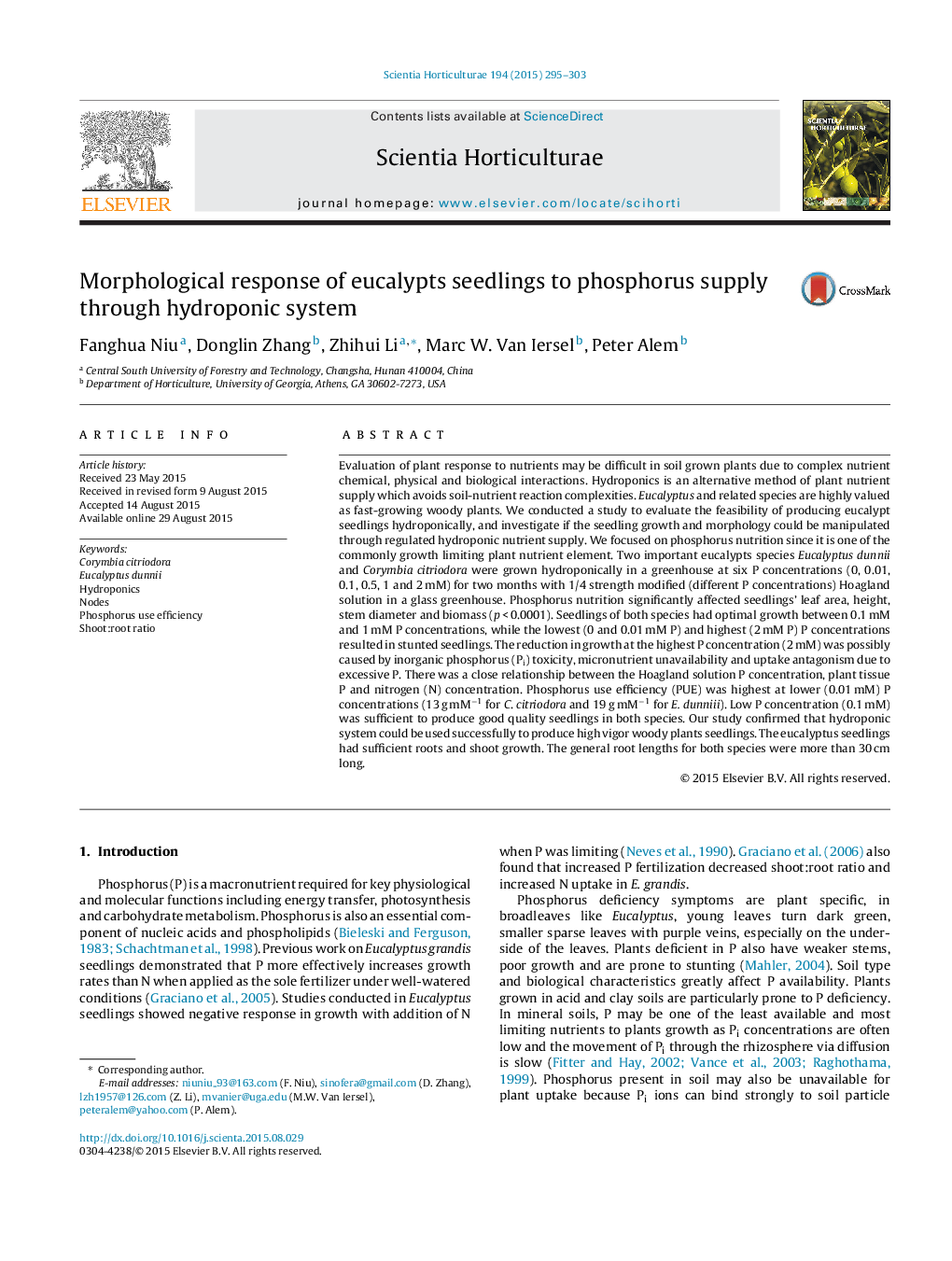| Article ID | Journal | Published Year | Pages | File Type |
|---|---|---|---|---|
| 4566345 | Scientia Horticulturae | 2015 | 9 Pages |
•Fully rooted eucalypts saplings were successfully grown within two months through customized hydroponic system consisting of nutrient reservoir, air circulating pump and root supporting material.•Phosphorus nutrition significantly affected eucalypts seedlings’ morphological parameters. Leaf area, plant height and shoot biomass declined at the lowest (0.01 mM) and highest (2 mM) levels of P concentration.•Phosphorus use efficiency (PUE) was highest at lower (0.01 mM) P concentrations.•Through the customized hydroponic system, low P concentration (0.1 mM) was sufficient to produce eucalypt seedlings with adequate roots (>30 cm long) and shoot growth.•There was a positive correlation between hydroponic solution P concentration and tissue P or N concentrations. However, the concentration of most micronutrients declined with an increase in solution P concentration.
Evaluation of plant response to nutrients may be difficult in soil grown plants due to complex nutrient chemical, physical and biological interactions. Hydroponics is an alternative method of plant nutrient supply which avoids soil-nutrient reaction complexities. Eucalyptus and related species are highly valued as fast-growing woody plants. We conducted a study to evaluate the feasibility of producing eucalypt seedlings hydroponically, and investigate if the seedling growth and morphology could be manipulated through regulated hydroponic nutrient supply. We focused on phosphorus nutrition since it is one of the commonly growth limiting plant nutrient element. Two important eucalypts species Eucalyptus dunnii and Corymbia citriodora were grown hydroponically in a greenhouse at six P concentrations (0, 0.01, 0.1, 0.5, 1 and 2 mM) for two months with 1/4 strength modified (different P concentrations) Hoagland solution in a glass greenhouse. Phosphorus nutrition significantly affected seedlings’ leaf area, height, stem diameter and biomass (p < 0.0001). Seedlings of both species had optimal growth between 0.1 mM and 1 mM P concentrations, while the lowest (0 and 0.01 mM P) and highest (2 mM P) P concentrations resulted in stunted seedlings. The reduction in growth at the highest P concentration (2 mM) was possibly caused by inorganic phosphorus (Pi) toxicity, micronutrient unavailability and uptake antagonism due to excessive P. There was a close relationship between the Hoagland solution P concentration, plant tissue P and nitrogen (N) concentration. Phosphorus use efficiency (PUE) was highest at lower (0.01 mM) P concentrations (13 g mM−1 for C. citriodora and 19 g mM−1 for E. dunniii). Low P concentration (0.1 mM) was sufficient to produce good quality seedlings in both species. Our study confirmed that hydroponic system could be used successfully to produce high vigor woody plants seedlings. The eucalyptus seedlings had sufficient roots and shoot growth. The general root lengths for both species were more than 30 cm long.
